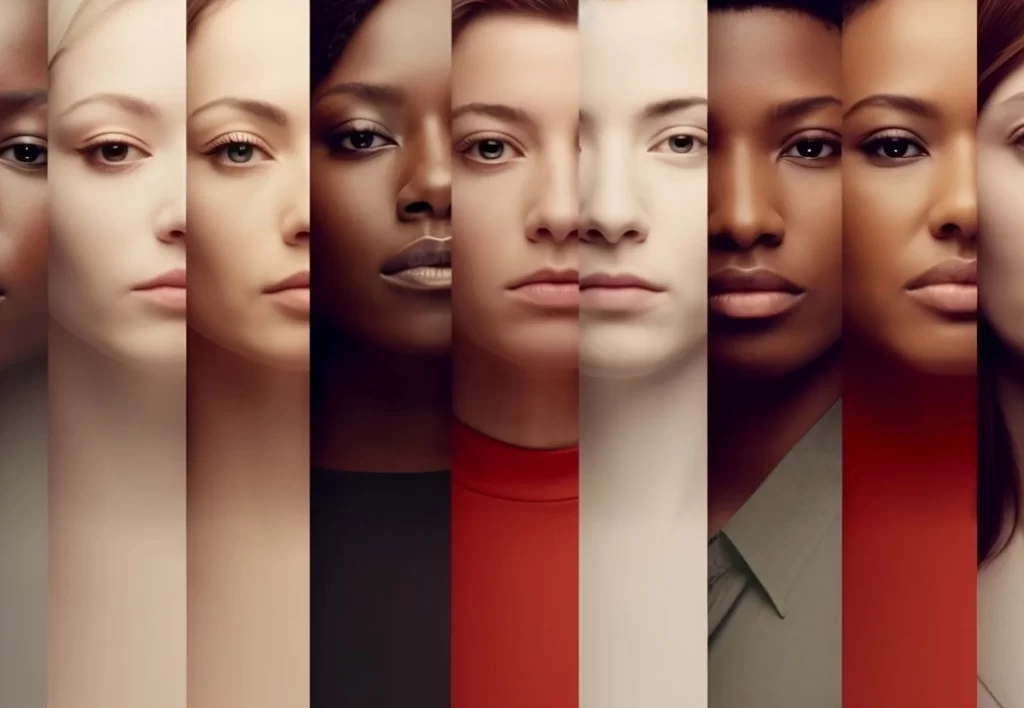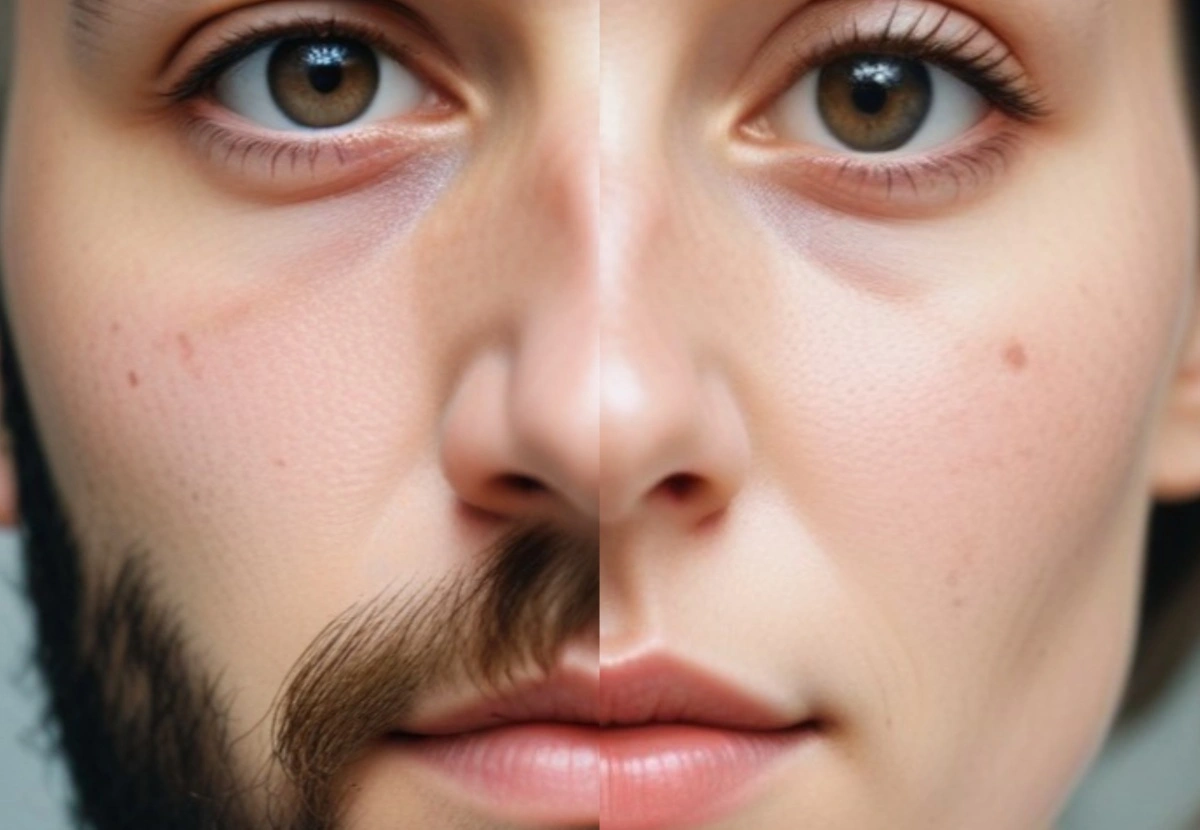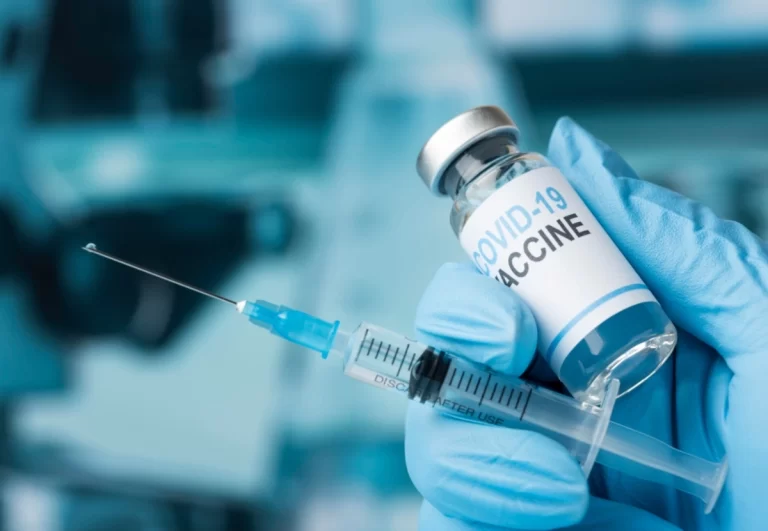Table of Contents
Introduction
In recent years, non-binary identity has gained increasing visibility and recognition. As our understanding of gender expands beyond the traditional male-female binary, it is crucial to explore the truth behind non-binary identities and address the ongoing debate surrounding their nature. This article delves into the complexities of non-binary identities, examining whether they represent natural variations in human gender expression or if they are better understood as misdiagnosed non-binary mental disorders. Understanding the meaning of the non-binary identity and its definition in psychology is essential in this context.
By exploring the latest research and perspectives from experts in the field, we will shed light on the experiences of non-binary individuals and the challenges they face in a society that often struggles to understand and accept gender diversity. From discussing the impact of societal recognition on the well-being of non-binary persons to examining the role of healthcare and support systems, this article aims to provide a comprehensive and nuanced understanding of non-binary identities. Join us as we navigate this important topic and work towards creating a more inclusive and accepting world for all individuals, regardless of their gender identity, and combat non-binary phobia.
Understanding Non-Binary Identities
Most people – including most transgender people – are either male or female. But some people don’t fit into the categories of ‘man’ or ‘woman,’ or ‘male’ or ‘female.’ For example, some people have a gender that blends elements of being a man or a woman, or a gender that is different than either male or female. Some people don’t identify with any gender. Some people’s gender changes over time. Understanding what is non-binary and what non-binary means is crucial in appreciating these diverse experiences7.
People whose gender is not male or female use many different terms to describe themselves, with non-binary being one of the most common. Other terms include genderqueer, agender, bigender, and more. None of these terms mean the same thing – but all speak to an experience of gender that is not simply male or female. The meaning and definition of the non-binary can vary widely among individuals7.
Defining Non-Binary Gender Identity
Non-binary is an umbrella term for gender identities outside the male-female binary. It can encompass a wide range of experiences and expressions. Understanding what is non-binary and what non-binary means helps in appreciating the diversity within non-binary identities 9. Some non-binary people identify as a mix of genders, while others reject the concept of gender altogether. The meaning of this identity can thus be quite diverse 10. What unites non-binary identities is that they do not conform to traditional notions of man and woman. These identities challenge conventional gender norms.
Non-binary people have always existed throughout history and across cultures, even if the terminology to describe these experiences is more recent. These identities reflect a long-standing diversity in human gender expression 14. Many indigenous cultures have recognized third genders or non-binary identities for centuries 13.

Dispelling Common Misconceptions
There are several myths and misconceptions about non-binary identities:
- Being non-binary is not a mental illness or disorder. It is a valid identity 11.
- Non-binary people don’t necessarily undergo medical transition. Some may pursue hormones or gender-affirming medical intervention, while others do not. Gender transition is a personal choice and varies among individuals 10.
Non-binary is not synonymous with being intersex (having anatomy or genetics that don’t fit typical definitions of male and female). Most non-binary people are not intersex and may identify as transgender 7.
There’s no one way to ‘look’ non-binary. Non-binary people express their genders in a multitude of ways, showcasing diverse gender presentation and gender expression, often blending androgynous styles.
Using ‘they/them’ pronouns for an individual has historical precedent and is not grammatically incorrect. Gender-neutral pronouns are valid forms of address commonly used within the non-binary community 10.
Historical and Cultural Perspectives
Non-binary identities have been documented for millennia across the globe 13:
Culture | Identity |
Bugis (Indonesia) | Bissu |
Navajo (North America) | Nádleehi |
Māhū (Hawaii) | Māhū |
Zapotec (Mexico) | Muxe |
The term ‘two-spirit’ is used by some indigenous North Americans to describe people with both masculine and feminine spirits. Historically, two-spirit people held important spiritual and ceremonial roles in their tribes, and this identity is recognized within the broader transgender spectrum13 14.
In the Byzantine Empire, some assigned female at birth people lived as men in male-only monastic orders, reflecting early instances of transgender identities 15. The Hijra of South Asia has been recognized as a third gender for hundreds of years, illustrating a long-standing acknowledgment of transgender and non-binary identities in various cultures 13.
Understanding the diversity and history of non-binary identities is crucial for increasing acceptance and support for non-binary people today. By learning about non-binary identities and embracing gender diversity, we can help improve the quality of life for everyone to live as their authentic selves 12.
Examining the Debate: Natural Occurrence vs. Personality Disorder
The debate surrounding non-binary identities often centers on whether they represent natural variations in human gender expression or if they are better understood as a misdiagnosed mental health condition. This section explores the arguments on both sides of this complex issue.
Arguments for Natural Occurrence
Some researchers and advocates argue that non-binary identities are a natural and valid form of human diversity. They point to historical and cultural examples of third genders or non-binary identities that have been recognized for centuries in various societies around the world, supporting the broader transgender narrative13 14. This suggests that non-binary expressions of gender are not a new phenomenon, but rather a natural part of the human experience, aligning with the understanding of transgender identities.
Additionally, studies have found structural and functional brain differences in transgender individuals that more closely resemble their self-identified gender than their assigned sex at birth 35 36 37 38 39 40 41 42 43 44 45 46. While these findings are not always consistent and can be complicated by factors like hormone treatments and small sample sizes,47they provide some evidence for a biological basis for transgender identities, including non-binary ones.
Contrasting Views on Personality Disorders
On the other hand, some experts contend that non-binary identities may be better understood as a manifestation of underlying personality disorders or other mental health conditions. Studies have found higher rates of personality disorders, particularly cluster B disorders like borderline and narcissistic personality disorders, among transgender individuals with gender dysphoria compared to the general population, indicating significant psychological distress related to binary personality and non-binary mental disorder 18 19 20 21 24 25 26.
However, the relationship between personality disorders and gender identity is complex and not fully understood. It is possible that the chronic stress and stigma experienced by transgender individuals, rather than their gender identity itself, may contribute to the development of personality pathology, highlighting the importance of addressing mental health and psychological distress 14 26 27. Additionally, not all studies have found elevated rates of personality disorders in transgender populations 16 19.

The Role of Scientific Research
Ultimately, more research is needed to fully understand the nature of non-binary identities and their relationship to mental health. While some studies suggest a biological basis for these identities, others point to a potential link with personality disorders. However, current research suffers from limitations such as small sample sizes, inconsistent results, and a reliance on clinical populations rather than the general public 2.
As scientific understanding of gender identity continues to evolve, it is important to approach this topic with an open mind and a commitment to evidence-based conclusions. At the same time, respecting the lived experiences and self-identified genders of non-binary individuals is crucial, regardless of the underlying causes or mechanisms involved.
Perspective | Key Arguments |
Natural Occurrence | – Historical and cultural recognition of non-binary identities 13 14 |
Personality Disorder | – Higher rates of personality disorders in individuals with gender dysphoria 18 19 20 21 24 25 26 |
Moving forward, a balanced and nuanced approach that considers both the potential for natural variation and the role of mental health factors will be essential in advancing our understanding of non-binary identities. By conducting rigorous research, fostering open dialogue, and prioritizing the well-being of non-binary individuals, we can work towards a more inclusive and evidence-based understanding of this important aspect of gender diversity.
The Impact of Societal Recognition of Non-Binary Individuals
Societal recognition and acceptance play a crucial role in the well-being and quality of life of non-binary individuals. The way society perceives and treats those who identify outside the traditional gender binary can have profound effects on their mental health, access to healthcare, and overall sense of belonging for non-binary person 31.
Legal and Social Challenges
Non-binary individuals often face significant legal and social challenges due to the lack of recognition and understanding of their identities. Many legal systems and social institutions operate on the assumption of a binary gender system, which can lead to discrimination, exclusion, and marginalization of a non-binary person, affecting their quality of life 32.
For example, a non-binary person may struggle to obtain legal documents that accurately reflect their gender identity, such as driver’s licenses, passports, or birth certificates. This can create barriers to accessing healthcare, employment, housing, and other essential services, impacting their overall quality of life 33.
Moreover, a non-binary person may face social stigma, prejudice, and harassment due to their gender identity. This can lead to increased rates of depression, anxiety, and other mental health concerns among non-binary populations, contributing to significant psychological distress 34.
Media Representation and Public Perception
Media representation and public perception of non-binary identities can significantly impact the experiences and well-being of non-binary individuals. Positive and accurate media representation can help increase visibility, understanding, and acceptance of non-binary and transgender identities, thereby improving their quality of life 28.
However, media portrayals of non-binary individuals are often limited, stereotypical, or absent altogether. This lack of representation can contribute to the invisibility and marginalization of transgender and non-binary communities 29.
Furthermore, public misconceptions and misinformation about non-binary identities can perpetuate harmful stereotypes and contribute to discrimination and prejudice. Educating the public about the diversity of gender identities and expressions is crucial for promoting understanding and acceptance of transgender and gender diversity 30.
Mental Health Considerations
Mental health providers play a significant role in the well-being of non-binary individuals 27. Although many may experience difficulty finding a trans-affirming provider or one who offers services related to medical transitioning 24 28. Those with transgender-affirming primary care physicians are reported to be eight times more likely to have pursued a gender-affirming medical intervention than those without 29.
Approximately 24% of non-binary participants in a large 2015 national survey reported negative experiences with healthcare providers, highlighting the challenges faced by transgender and non-binary persons due to healthcare discrimination 12. Non-binary individuals who have experienced discrimination from medical professionals may withhold information, postpone, or avoid care, which underscores the importance of understanding what a transgender person needs from their healthcare providers to prevent healthcare discrimination 1 31 32 at rates more frequent than their cisgender LGB peers 33. Compared to their binary trans peers, non-binary people have reported less physical and mental healthcare utilization despite increased need, indicating a significant gap in support for non-binary persons in terms of healthcare access and mental health services 34.

Resources and Support Networks
Making a referral to a culturally competent provider can be challenging due to the lack of gender-inclusive training, especially for transgender individuals seeking gender-inclusive healthcare 27 28. Large cities with LGBT Health Centers and known providers have become reliable sources of care, often with a network of mental health providers experienced in transgender healthcare 16. For those in rural or conservative areas, finding a provider for referral can be more challenging, particularly for transgender individuals 16. Some providers offer online mental health services, but it is important to ensure the provider is licensed in the jurisdiction where the transgender client is receiving services.
Patients should be encouraged to reach out to possible providers and ask questions to ensure the provider can meet their needs. Some offer an initial no-cost consultation to determine if the provider is a good fit. A list of providers by U.S. state can be found through the WPATH website, which includes transgender healthcare providers 29.
Resource | Description |
LGBT Health Centers | Reliable sources of care in large cities, often with mental health provider networks |
WPATH Provider Directory | List of providers by U.S. state through the WPATH website |
Online Mental Health Services | Some providers offer remote services, but licensing in the client’s jurisdiction is important |
No-cost Initial Consultations | Allows determining if a provider is a good fit before committing |
Mental health providers are encouraged to create interdisciplinary relationships, as transgender people pursuing gender-affirming treatments will require care from various providers, including primary care physicians, endocrinologists, and surgeons 30. Seeking out names of known affirmative care providers in the area is recommended 30.
Moving Forward: Embracing Diversity and Inclusion
As society continues to evolve and become more accepting of gender diversity, it is crucial to foster an environment that embraces and supports individuals of all gender identities. Moving forward, we must focus on promoting allyship and working towards greater recognition and inclusion of non-binary individuals.
The Importance of Allyship
Allyship is a critical component of creating a more inclusive and accepting society for non-binary and transgender individuals. Allies can use their privilege and voice to advocate for the rights and well-being of gender-diverse individuals, promoting gender diversity and enhancing their quality of life 48.
Some ways to be an effective ally include:
- Using inclusive language and respecting individuals’ preferred pronouns 46 47
- Speaking out against discrimination and microaggressions 48
- Supporting organizations and initiatives that promote gender diversity and inclusion 48
- Educating oneself and others about non-binary identities and experiences 46 47
By actively engaging in allyship, we can create a more supportive and affirming environment for non-binary and transgender individuals and help drive positive change in society, ultimately improving their quality of life.
Future Prospects for Non-Binary Recognition
As awareness and acceptance of non-binary and transgender identities grow, there is hope for greater legal and social recognition in the future. Some steps towards this goal include:
Initiative | Description |
Legal recognition | Advocating for the inclusion of non-binary gender markers on legal documents, such as driver’s licenses and passports, is essential for recognizing what is a non-binary person and supporting transgender rights 49 |
Inclusive policies | Encouraging workplaces, schools, and other institutions to adopt gender inclusive policies that protect and support non-binary and transgender individuals is crucial for understanding what is a non-binary person and ensuring their rights and quality of life 50 |
Representation | Increasing visibility and representation of non-binary individuals in media, politics, and other public spheres 51 |
By working towards these objectives, we can create a more inclusive and equitable society that celebrates gender diversity and allows non-binary and transgender individuals to live authentically and thrive, enhancing their quality of life.
Embracing diversity and inclusion is not only a matter of social justice but also a way to enrich our communities and tap into the full potential of all individuals. By educating ourselves, practicing allyship, and advocating for change, we can create a world that truly celebrates and supports the beautiful spectrum of gender identities, including transgender individuals, and promotes gender diversity and quality of life.
Conclusion
As we have explored the complexities surrounding non-binary and transgender identities, it is evident that they represent a valid and natural expression of human diversity. While the debate regarding the underlying factors contributing to non-binary experiences continues, it is crucial to prioritize the well-being and acceptance of non-binary individuals. By fostering a society that embraces gender diversity, providing accessible healthcare and support, and promoting education and allyship, we can create a more inclusive environment for all, thereby improving their quality of life and mental health.
Moving forward, it is essential to continue the conversation, conduct further research, and advocate for the rights and recognition of non-binary and transgender individuals. As we work towards a more accepting and understanding world, we must remember that every person, regardless of their gender identity, deserves to live authentically and with dignity. By celebrating the beautiful spectrum of human diversity and promoting gender diversity, we can create a society that truly values and supports all individuals, enhancing their quality of life.
References
[1] – https://transequality.org/issues/resources/understanding-nonbinary-people-how-to-be-respectful-and-supportive
[2] – https://www.apadivisions.org/division-44/resources/nonbinary-fact-sheet.pdf
[3] – https://www.ncbi.nlm.nih.gov/pmc/articles/PMC6830997/
[4] – https://transequality.org/issues/resources/understanding-nonbinary-people-how-to-be-respectful-and-supportive
[5] – https://www.npr.org/2021/06/02/996319297/gender-identity-pronouns-expression-guide-lgbtq
[6] – https://transequality.org/sites/default/files/docs/resources/Understanding-Non-Binary-July-2016_1.pdf
[7] – https://transequality.org/issues/resources/understanding-nonbinary-people-how-to-be-respectful-and-supportive
[8] – https://transequality.org/sites/default/files/docs/resources/Understanding-Non-Binary-July-2016_1.pdf
[9] – https://www.minus18.org.au/articles/i-just-came-out-as-non-binary-here’s-what-that-means
[10] – https://www.teenvogue.com/story/9-things-people-get-wrong-about-being-non-binary
[11] – https://rightasrain.uwmedicine.org/life/relationships/transgender-nonbinary-myths
[12] – https://wearencs.com/blog/5-massive-misunderstandings-about-being-non-binary
[13] – https://www.britannica.com/list/6-cultures-that-recognize-more-than-two-genders
[14] – https://outandequal.org/wp-content/uploads/2021/02/Nonbinary-History.pdf
[15] – https://www.gendergp.com/non-binary-people-in-history/
[16] – https://transequality.org/issues/resources/understanding-nonbinary-people-how-to-be-respectful-and-supportive
[17] – https://www.quora.com/Is-there-scientific-proof-for-the-existence-of-nonbinary-people
[18] – https://www.ncbi.nlm.nih.gov/pmc/articles/PMC6677266/
[19] – https://www.ncbi.nlm.nih.gov/pmc/articles/PMC4053264/
[20] – https://www.ncbi.nlm.nih.gov/pmc/articles/PMC7084367/
[21] – https://www.reddit.com/r/therapists/comments/12u0mek/bpdgender_dysphoria_correlations/
[22] – https://education.nationalgeographic.org/resource/how-science-is-helping-us-understand-gender/
[23] – https://www.ncbi.nlm.nih.gov/pmc/articles/PMC6677266/
[24] – https://www.reddit.com/r/TooAfraidToAsk/comments/s7q6iw/is_there_evidencescience_behind_gender_being/
[25] – https://lambdalegal.org/issues/transgender-nonbinary-rights/
[26] – https://lambdalegal.org/nonbinary-trans-rights-faq/
[27] – https://www.ncbi.nlm.nih.gov/pmc/articles/PMC9679587/
[28] – https://www.linkedin.com/pulse/non-binary-representation-media-progress-challenges-robyn-hunt-
[29] – https://inkspire.org/post/non-binary-gender-identities-representation-in-media/
[30] – https://www.reddit.com/r/NonBinary/comments/18llqwv/media_with_nonbinary_characters/
[31] – https://www.lgbtmap.org/effective-messaging/advancing-acceptance
[32] – https://www.universityofcalifornia.edu/press-room/uc-advances-equality-inclusion-implementing-nonbinary-gender-identification
[33] – https://reformedjournal.com/promoting-the-thriving-and-belonging-of-nonbinary-and-gender-diverse-people-in-our-communities-and-families/
[34] – https://collectivehealth.com/blog/benefits-shop-talk/a-guide-to-navigating-transgender-and-gender-diverse-benefits/
[35] – https://www.plannedparenthood.org/learn/gender-identity/transgender/what-do-i-need-know-about-trans-health-care
[36] – https://www.ncbi.nlm.nih.gov/pmc/articles/PMC9330629/
[37] – https://www.ncbi.nlm.nih.gov/pmc/articles/PMC9816129/
[38] – https://www.ncbi.nlm.nih.gov/pmc/articles/PMC6830991/
[39] – https://transcare.ucsf.edu/guidelines/mental-health
[40] – https://pflag.org/resource/nonbinary-resources/
[41] – https://www.lgbtmap.org/policy-and-issue-analysis/advancing-acceptance-for-communities
[42] – https://www.thetrevorproject.org/resources/category/gender-identity/
[43] – https://genderdiversity.org/
[44] – https://www.un.org/en/chronicle/article/education-pathway-towards-gender-equality
[45] – https://www.globalpartnership.org/what-we-do/gender-equality
[46] – https://www.thetrevorproject.org/resources/guide/a-guide-to-being-an-ally-to-transgender-and-nonbinary-youth/
[47] – https://www.stonewall.org.uk/about-us/news/10-ways-step-ally-non-binary-people
[48] – https://www.hrc.org/resources/be-an-ally-support-trans-equality
[49] – https://jgspl.org/future-gender-designation-u-s-legal-documents/
[50] – https://www.hibob.com/guides/hr-leaders-guide-for-non-binary-gender-inclusion/
[51] – https://news.temple.edu/news/2021-08-04/how-gender-identity-revolution-impacts-society
[52] – https://transequality.org/issues/resources/understanding-nonbinary-people-how-to-be-respectful-and-supportive
[53] – https://www.medicalnewstoday.com/articles/321529
[54] – https://www.hrc.org/resources/transgender-and-non-binary-faq
[55] – https://www.cambridge.org/core/books/nonbinary-genders/conclusion/B538EE2CFEEBEE38876CACC44B7AD950
[56] – https://www.sciencedirect.com/science/article/pii/S2352250X22002202
[57] – https://aeon.co/essays/nonbinary-identity-is-a-radical-stance-against-gender-segregation






